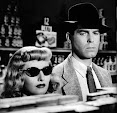Australian politics isn't really followed by much of the Anglosphere, which is a shame because some of the best examples of the change in Western culture can be illustrated by its study.
But firstly a bit of background. Prior to the 1970's Australia was effectively a Christian country divided among Catholics and Protestants with this division being felt socioeconomically. The Catholics were predominantly the class of the workers while the Protestants were the class of the establishment. The main Protestant divisions being predominantly the Anglicans (equivalent to the Episcopalians) ,the Presbyterians and a significant minority of Methodists. In comparing it to the U.S., Australia tended to be a bit more "mainline". And in voting patterns the Catholics tended to vote for the Left (Labour) while the Protestants voted for the Conservatives (Called Liberals, as in the classical liberal tradition.) The Liberal party was the political arm of the Protestant establishment.
For much of the 20th Century the Catholic component of the culture felt that it was treated as second class in the country, and I bring this point up not to raise grievances but to illustrate that the dominant governing culture was protestant despite the fact that there was no established religion in Australia.
The most conservative state in Australia was the sate of Victoria, and most of the senior establishment lived in the eastern suburbs of Melbourne, it's main city. The electoral seat of Kooyong was geographically aligned with the demographic that governed and administered the country. The seat itself was considered a citadel of the conservative demographic, being the seat of Australia's most successful--and longest serving-- conservative Prime Minister, Robert Menzies. Menzies, himself, was quite religious, describing himself "as a simple Presbyterian." The seat was always held by a conservative, even in times where there were massive electoral swings to the left.
A funny thing happened at the last federal election.
The conservatives lost the seat.
What was also interesting was the losing incumbent was generally likeable and politically not really offensive. So why the loss?
The candidate who won the seat, Dr Monique Ryan, ran on the "Teal" party platform. she represented the interests of the wealthy woke. Whats also interesting is the colour that they chose to represent their stand. Teal is a mix of blue and green and it illustrates the nature of the political shift which I also think is an apt description of the shift in ideological/religious values of the Kooyong voting demographic.
The Kooyong electorate was a bastion of traditional "Protestant" civic morality however with the collapse of Protestantism, both in terms of its number of adherents and shift to the left, the traditional governing classes have abandoned their traditional protestant values and assumed woke ones. The bottom line is that the conservative party has lost its traditional supporter base. The governing class, which used to be Protestant is Protestant no more. (At least in a traditional sense.)
Similar political swings and losses were seen in other areas of the country. The conservative political loss in this former bastion of conservative values does fully convey the catastrophe of this loss. For the seat of Kooyong is also the home of senior public servants, board members, executives and so on. The senior apparatus of government and commerce is woke.
The political changes seen in Australia have been echoed in the rest of the Anglosphere and this has paralysed the political arm of conservatism. Traditional conservative ideology has been abandoned by the class that established it and is now adrift. Protestantism, which gave the conservative parties their ideological strength has been drained especially in the ruling classes, and a conflict has arisen in its ranks between the woke benefactors and the traditional i.e. Christians who still hold onto the faith.


